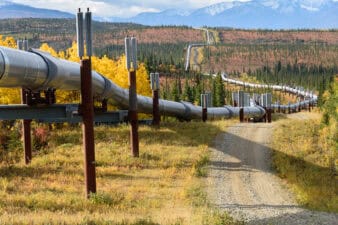If you are a Canadian investor looking to play oil, you are in luck—about 18.5% of the TSX are energy-related names. It is very important to note, however, that not all oil-based stocks are the same, and the return profiles across a group of oil producers at the same oil-price level can vary hugely.
One of the main factors that determines returns is the type of oil being produced and the type of production. The Canadian energy space is mostly dominated by oil sands producers (in 2016 there is expected to be about 2.5 million barrels per day of oil sands production out of total Canadian production of 4.4 million barrels per day).
The rest of the production mainly comes from conventional oil production, which is mostly light oil that is extracted using traditional wells (compared to oil sands production, which needs to be mined or pumped out using wells by heating oil sands with steam).
With oil prices looking to stay lower, conventional producers such as Crescent Point Energy Corp. (TSX:CPG)(NYSE:CPG) are likely to be more profitable than oil sands producers such as Suncor Energy Inc. (TSX:SU)(NYSE:SU).
Conventional producers have much lower costs
Most experts seem to agree that while oil prices will rise above current levels of about $39 per barrel, they are unlikely to ever rise to levels as high as $100 per barrel again due to the massive supply of U.S. production that can come online and be profitable at about $55 or $60 per barrel.
This means prices are likely set to stay around those levels for a longer period, and this is bad news for oil sands producers, since these projects have much higher costs. Firstly, oil sands projects have higher operating costs than conventional producers. These are simply the costs required to keep production going on a day-to-day basis and do not include capital costs (including, for example, the cost to build a mine or on-going investments).
TD Bank estimates that oil sands mining projects have average operating costs of $32.25 per barrel, and in-situ oil sands projects have operating costs of about $12.17 per barrel. Conventional producers have lower operating costs on average. Crescent Point, for example, had costs of $10.94 per barrel in the last quarter.
Oil sands producers also have another major cost that conventional producers don’t have, and that’s the fact that their product (usually diluted bitumen) receives a major discount to West Texas Intermediate oil prices, which is the oil price that is usually quoted.
Heavy oil (also known as Western Canadian Select, which is close to the price of bitumen) currently trades at a $17-per-barrel discount to West Texas Intermediate. Conventional producers, like Crescent Point, sell light oil that usually trades close to West Texas Intermediate, so they do not receive such a large discount.
This means if oil prices are US$40 per barrel, for example, and an oil sands and conventional project have the same operating costs (say, US$30), the oil sands project has an additional cost because it sells its product at a discount, which could mean it is not profitable, whereas the conventional producer would be.
In addition, oil sands producers also need to purchase diluent, which is an additional cost on top of the discount received for the product and the higher operating costs. Oil sands producers produce bitumen, which is too thick to be transported via pipeline and, as a result, fairly expensive diluent needs to be produced to create the diluted bitumen these producers sell.
The end result? TD Bank estimates that light oil producers have a breakeven cost of only US$21.50 per barrel compared to US$40 per barrel for in-situ oil sands producers and US$36.34 for mining producers.
Crescent Point Energy is an excellent way to play light oil
Crescent Point currently has the second-highest profit per barrel of its peer group. It also has a strong balance sheet and estimates that at US$35 per barrel it can comfortably fund its operations, capital expenses, as well as its dividend with plenty of room for cash flow to grow as oil prices move higher.






